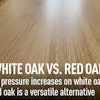I think a couple of dozen people probably sent me a link to this article. Can’t imagine why … it only starts with:
In the last 15 years, EPA has invented three bogus human carcinogens: dioxin, formaldehyde, and TCE.
You can read the article directly to learn about how the EPA handles dioxin and TCE—we’ll (obviously) look at what it says about formaldehyde. But in all three cases, the author argues that it is political pressure, not science, that has demonized these chemicals.
The author pulls no punches. He says the determination that formaldehyde causes cancer is “based on (an) unsupported and biologically implausible assumption” and is the result of a “political opportunity provided by a high-profile event rather than any scientific evidence.” Arguments against formaldehyde being a legitimate chemical of concern include:
The adverse health effects (both acute & chronic) of inhaled formaldehyde in humans occur only at the portal of entry & are essentially limited to eye & nose irritation… measured formaldehyde levels in the blood and tissues do not even change with exposure, e.g., with inhalation exposure as high as 15 ppm or ingestion of foods containing high levels of formaldehyde… It is rapidly metabolized to formic acid, thence to CO2, with a half-life in blood of only 1.5 minutes.
CARB’s emissions levels are 0.13 ppm—at the highest level. However, according to this, at an exposure of over a 100x that level, at 15 ppm, it’s still not detected in the body.
Consider that. CARB’s emissions levels are 0.13 ppm—at the highest level. However, according to this, at an exposure of over a 100x that level, at 15 ppm, it’s still not detected in the body. The body processes it so quickly, it’s just not hanging around.
The lowest cancer effect level (CEL) for formaldehyde-induced nasal tumors in rats is 10,000 ppb, 6 hours/day, 5 days/week, for 24 months (i.e., most of a rat’s lifetime). Under the same conditions, 2,000 ppb had no effect. Only laboratory animals can be chronically exposed to such high, irritating levels of HCHO; even short-tern exposure to such high levels of formaldehyde would be intolerable to human beings.
In layman’s terms, at the levels they are dosing the rats, we’d be fleeing the room immediately.
In response to a congressional request, the National Research Council of the National Academies of Science (NAS) performed a review of EPA’s evidence that formaldehyde was a human carcinogen. NAS found “no clearly established framework for establishing causation on the basis of the weight or strength of evidence.” Yet, officially, formaldehyde is still called a “known” human carcinogen.
I’ve blogged before about the intermixing of “science” with politics and regulations and made a plea for common sense. I also blogged previously about a report written in 1999 that noted “putting huge amounts of money into minuscule hypothetical risks damages public health by diverting resources and distracting the public from major risks.” Once again, I’m asking that people focus on the real science, not chemophobia, and not agendas, not on the selling of fear.
We’ve got a lot of issues facing us, not just the wood flooring industry, but in the world today. To solve them, to paraphrase Matt Damon’s best line from movie, The Martian: "In the face of overwhelming odds, aren’t we left with only one option—we’re gonna have to science the shit out of this."
But, of course, that only works if we pay attention to science in the first place…
































